
Table of contents:
- Author Bailey Albertson [email protected].
- Public 2023-12-17 12:53.
- Last modified 2025-01-23 12:41.
Dispatcher for devices
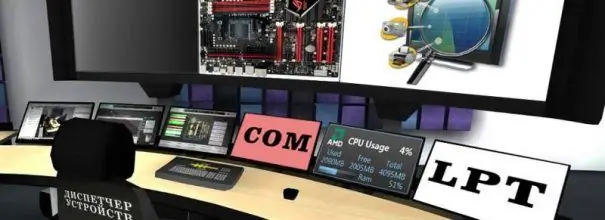
In the computer, as in the army, the commands of the commander-in-chief (processor) must be executed quickly and accurately. System and peripheral combat units as part of the PC operate in concert, each knows the assigned task and receives the necessary resources from the system to successfully complete it. But in the army, the operational headquarters monitors the interaction of various types of troops, and in a personal computer these functions are performed by the Windows device manager.
Content
-
1 Call Windows 7 Device Manager
1.1 Video: How to Open Device Manager in Windows 7
- 2 Show hidden hardware in device manager
- 3 If Device Manager does not open
-
4 Typical problems when working with Device Manager
- 4.1 Empty Device Manager
-
4.2 What to do if an unknown device was found
- 4.2.1 Video: How to Install a Driver via Device Manager
- 4.2.2 Video: How to Find a Driver by Device ID
- 4.3 Problems with USB ports
- 4.4 There are no COM and LPT ports in Device Manager
- 4.5 Printer connected to PC not found
- 4.6 What to do if the monitor is recognized as universal
-
4.7 Missing floppy drive from device manager
4.7.1 Video: how to repair a floppy drive in windows 7 device manager
- 4.8 Device Manager does not see the video card
Calling the Windows 7 Device Manager
Device Manager is a special program that allows you to flexibly interact with the Microsoft Management Console (MMC), which first appeared in Windows 95. With the help of the manager, the user can view all devices installed on the PC, get information about the resources allocated to them, manage their on / off, and also manipulate the drivers.
There are several ways to open the device manager window:
- using the Windows control panel;
- through the command line or the "Run" window;
- through the interface of the OS itself.
Since the dispatcher is formally located in the control panel, to call it we need to first open this panel:
- Click the Start button on the taskbar to open the menu.
- Select "Control Panel".
- In the search box, type the word "dispatcher".
-
Select "Device Manager" from the list and click on it.

Search for Device Manager in Control Panel Type the word "dispatcher" in the search so that the system displays a list of all objects with similar names
You can do without searching. To do this, select the "System and Security" section in the control panel and go to the "Device Manager" menu item in the "System" subsection.

The item "Device Manager" is in the subsection "System"
You can also launch the console snap-in through the Computer Management window.
- Right-click on the "Computer" icon on the desktop or on the item of the same name in the "Start" menu.
- Select "Management" from the drop-down menu.
-
In the Computer Management window, under Utilities, find and launch Device Manager.

Computer Management window Device Manager can be launched through the "Utilities" section in the computer management menu
The dispatcher can be started even faster by calling it by the file name. To do this, you just need to call the "Run" window (Win + R), write devmgmt.msc in it and click OK. Another hotkey, Win + Pause, brings up the Windows Control Panel System window, which also contains a link to launch Device Manager.

The "System" window, which contains a link to Device Manager, can be invoked using the Win + Pause keyboard shortcut
Video: How to Open Device Manager in Windows 7
Show hidden hardware in device manager
In the dispatcher window, the information of the Microsoft management console about the equipment installed on the personal computer or laptop is presented in graphical form. Devices in the list can be grouped either by type or by connection. You can change the grouping principle by selecting the appropriate item in the "View" menu.
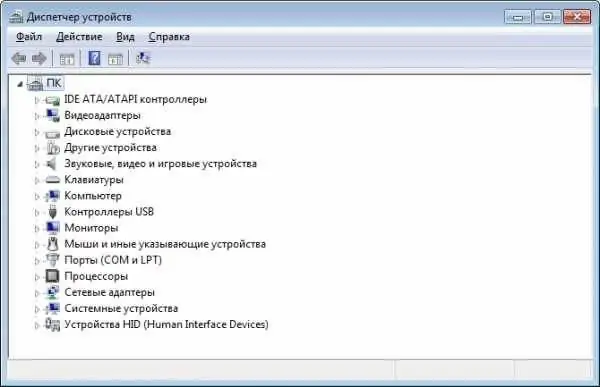
The Windows 7 Device Manager window provides information about the hardware installed on the personal computer
Devices that are not recognized by the system (for example, if there are no installed drivers for them) or work with an error are marked with a yellow triangle with an exclamation mark inside.
However, in a standard form, the device manager does not show all the equipment it knows, because the so-called hidden devices may also be present in the system. One of the typical types of such equipment is devices with previously installed drivers, which are now disabled. In order to view hidden devices, enter the "View" menu of the dispatcher and check the box "Show hidden devices".
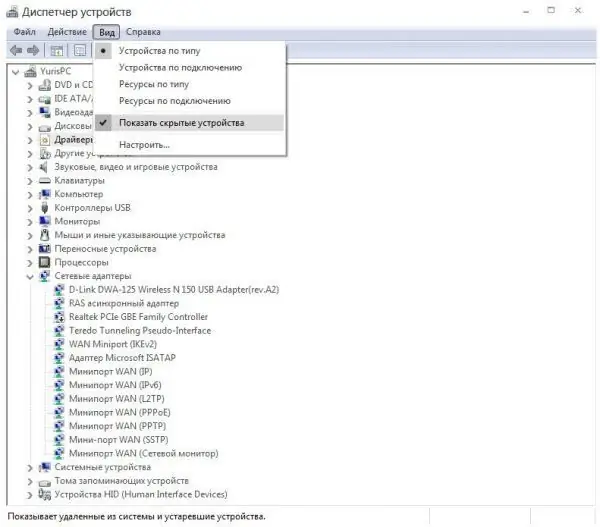
When you activate the "Show hidden devices" menu item, the number of network adapters has increased significantly
There is one more small but important nuance when displaying hidden devices … The device manager stores information even about those previously installed devices that are currently disabled (physically absent, disabled in the BIOS, etc.). The DEVMGR_SHOW_NONPRESENT_DEVICES environment variable is responsible for displaying this kind of equipment. If it is assigned a value of 0, then the device data will not be shown to the user. The devmgr.dll library checks the value of this variable before starting the MMC console. It should be mentioned that such ghost devices can cause conflicts with existing equipment. So, when installing a new network card, the system can warn you about an IP address conflict with a controller that was in this PC sometime in the past. To get information about installed but currently disabled hardware in Device Manager, follow these steps:
- Click the Start button, select All Programs, and then Accessories and Command Prompt.
- At the command prompt, enter the command "set devmgr_show_nonpresent_devices = 1" and press Enter.
-
Below enter start devmgmt.msc and press Enter again.

Commands for enabling the display of disabled equipment In order for the device manager to show disabled devices, you need to enter two commands in the control console
In the future, these two commands can be issued in the form of a bat-file to significantly simplify the launch of the device manager with the parameters you need.
If Device Manager Won't Open
Sometimes users run into problems opening Device Manager using any of the methods described above. It may simply not start, or a window appears, signaling various errors. In most cases, this behavior of the operating system is caused by the consequences of computer viruses. It also happens that the device manager files on the disk are corrupted or missing, which can also be caused by the intrigues of malware that has penetrated your PC from the network. In any case, the first thing you should do is check your computer for viruses and, if any, get rid of them. If you don't have any antivirus software installed, then we recommend downloading at least the portable, constantly updated and free utility CureIt! from Dr. Web and check your PC with it.
If the problem with starting the dispatcher is not solved by cleaning from viruses, use the built-in capabilities of the OS to search for errors and restore damaged system files. To do this, you need to do the following:
- Open the Run window (Win + R).
- Type cmd in it and click OK to launch the command line.
-
At the command prompt, type sfc / scannow and press Enter.

Running the error search routine If the device manager system files are corrupted, the sfc utility will report this and repair them
You can independently check for the presence of the necessary files in the System32 subdirectory of your OS. If you have problems starting the device manager, make sure that the devmgmt.msc file itself is present on the disk, as well as the devmgmr.dll, msxml3.dll, msxml6.dll and others libraries. In the absence of these files, you will have to use the bootable LiveCD and manually copy them from the Windows 7 distribution.
Typical problems when working with Device Manager
If you have successfully launched Device Manager, you may still encounter a number of problems while using it. For example, the device you need will not be displayed in the list, the dispatcher will not be able to detect it when updating the hardware configuration, or even the manager window will be completely empty. Our advice will help you overcome these unpleasant moments.
Empty device manager
There are several main reasons why a dispatcher window can shine with pristine whiteness.
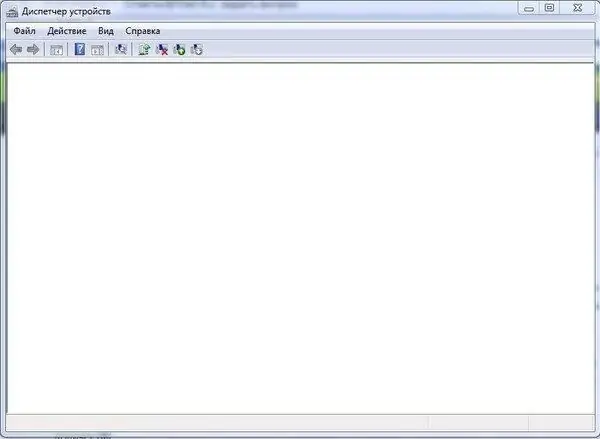
If there are no devices in the manager window, you should check your PC for viruses
Most likely, malicious viruses, for example, Apropos, can again be to blame for this. In this case, scan your PC with an antivirus scanner and get rid of unwanted guests. For the Apropos virus, the simplest solution is to use the AproposFix utility. Boot your computer into Safe Mode, extract the AproposFix files from the archive and run the RunThis.bat file. When the virus removal procedure is completed, the program will write a log file to disk, in which it will list everything that was found and fixed (or deleted).
Another reason for the empty device manager may be the disabled Plug & Play system service, which is responsible for recognizing changes in the installed hardware. To enable this service, you need to complete the following steps.
- Open the Run window (Win + R).
- Write Services.msc in it and click OK.
- Find the Plug-and-Play service in the list and double-click on it.
- Specify Automatic in the Startup Type field and click OK.
-
Close the window and restart your computer.

Services window In order for the Plug-and-Play service to start at computer startup, set the Startup type to Automatic
In addition, you may have incorrectly configured access to the entries that describe devices in the system registry. To fix this problem, you need to start the registry editor and follow these steps:
- Find the registry key HKEY_LOCAL_MACHINE / SYSTEM / CurrentControlSet / Enum.
- Right-click on the Enum key, in the menu that opens, select the "Permissions" item.
- If the window that opens is empty, add permissions for the Everyone group and the System user. To do this, use the "Add" button. For the "Everyone" group, set the rights "Read Only" (the "Permissions" column, a check mark only in the "Read" item), for the System user, set the "Full Access and Read" permissions.
- In the lower part of the window, click on the "Advanced" button and put a tick in the "Change permissions for all child objects …" item. Then click OK.
- In the warning window that appears, click on the "Yes" button.
-
Close Registry Editor and restart your computer.

Setting access permissions in the registry For the "Everyone" group, set the rights "Read Only", and for the "System" user - "Full Control"
What to do if an unknown device is found
Windows considers as unknown any hardware for which there is no driver, or it exists, but is intended for a different version of the system, or the OS was unable to recognize the device identifier code used in the Plug & Play standard. The most commonly unknown devices are complex and composite devices that operate in the USB and IEEE 1394 standards and do not fall into any of the classes defined for Windows and supported by the system.
Such a device is marked in the dispatcher with a special pictogram - an exclamation mark in a yellow triangle.

Unknown devices are marked with a special pictogram in the form of an exclamation mark on a yellow background
In order for Windows to see and recognize the connected device, it is mandatory to install its driver using either the update center or by downloading the installation package yourself from the equipment manufacturer's website. To do this, right-click on the unknown hardware, select "Update driver" from the menu that opens and follow the system prompts.
Video: how to install a driver via device manager
If you do not know what kind of device it is and where to get a driver for it, try searching for the required software by hardware ID.
- Double-click the device in the manager.
- In the "Properties" window that opens, go to the "Details" tab.
-
Select the Hardware ID property.

Details tab in device properties Copy the value of the "Hardware ID" property to find the required driver on devid.info
- Go to the "Value" field, select the line with the identifier and press Ctrl + С to copy its contents.
-
Open the website https://devid.info/ in your browser, paste the copied data into the search field and click the "Search" button.

Driver search result by ID Download and install the driver for your OS version
- Download the required driver and install it.
Video: how to find a driver by device ID
Problems with USB ports
Since the USB controller, like any hardware, interacts with the OS through a driver, first of all make sure that all the necessary drivers are installed from the motherboard disk.
If everything is in order with the installation of the drivers, but your computer suddenly stops detecting USB devices, a simple reboot of the system can help you. Restart your computer normally. With a high degree of probability, we can assume that after a restart, this trouble will disappear without a trace.
In the event that an immediate reboot is undesirable for some reason (for example, a long-running task is being performed that you do not want to interrupt), you can use the Device Manager for a gentle “reboot” (restarting only the hardware drivers).
- Open the main menu item "Action" in the manager.
- Select the "Update hardware configuration" option and wait for the device manager window to update.
-
If the restart of the drivers was successful, the previously missing section "USB controllers" should appear in the installed equipment tree. Thus, you have solved the problem and the USB ports function properly again.

Hardware configuration update After updating the configuration, the USB ports should work normally
Another way to get the ports working is to remove and then swap the USB controllers.
- Right-click each line in turn under USB Controllers and remove the devices. If you are using a USB mouse or keyboard for work, it is worth remembering that from the moment the controllers are removed until the next PC boot, they will stop working.
-
Reboot your computer. The controllers you removed will be rediscovered by the system, which will install the most appropriate drivers for them. As a result, USB ports will become available again.

Removing USB device drivers After removing the devices and restarting, Windows will reinstall the controller drivers again and the problem with them can be resolved
If you consider yourself a fairly experienced user who knows how to properly handle the Windows system registry without damaging your PC, you can try another error correction option to get rid of the problem with USB ports. To do this, start from the "Start" menu or using the "Run" window (Win + R) call the registry editor regedit and perform the following actions in it:
- Find the registry key HKEY_LOCAL_MACHINE / SYSTEM / CurrentControlSet / Control / Class / {36FC9E60-C465-11CF-8056-444553540000}.
- Check if you have created parameters named LowerFilters or UpperFilters.
-
Remove them, close Registry Editor and restart your computer.

Editing the registry branch responsible for USB controllers Remove all parameters named LowerFilters and UpperFilters and restart your computer
COM and LPT ports are missing in Device Manager
Sometimes it may be necessary to configure the parameters of the serial COM port (for example, if you want to connect a programmer or a specialized industrial controller to your computer), but this section, as well as the ports themselves, is absent in the device manager. It should be noted that in modern computers, especially in laptops and netbooks, COM and LPT ports may not be present on the motherboard at all as they are unnecessary. The ports you are looking for can be simply disabled in the BIOS and, because of this, will not be displayed in the manager. If you want to use a COM or LPT port, be sure to go to BIOS and enable this type of hardware. It is useful to make sure that the drivers for your computer's motherboard are installed and up to date.
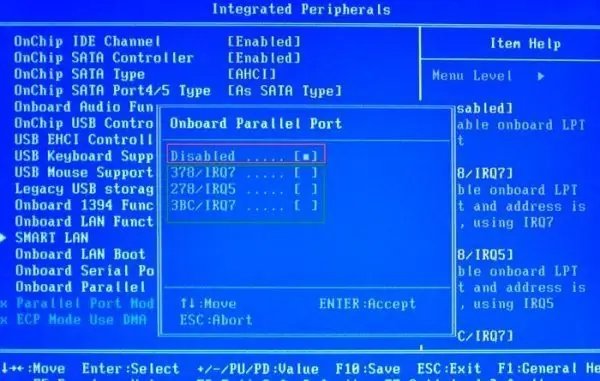
Make sure the port you want is not in Disabled state
If the above tips didn't help, there is an option to force these ports from the Device Manager itself. This requires:
-
In the menu "Action" select the item "Install old device".

Action menu To install the missing ports, select the "Install old device" item
-
Choosing the right type of equipment.

Choosing the type of equipment In the list of equipment types, select the line "Ports (COM and LPT)"
-
We select the required port.

Port selection We indicate which port we need to install: serial (COM) or parallel (LPT, printer port)
-
If necessary, configure the port that appears in the device manager.

Configuring the installed port It remains only to configure the port that appears in the list of equipment or update its driver
The printer connected to the PC was not found
First of all, make sure that the printer is physically connected to the PC. Check the cord itself, as well as the condition of the connectors on the printer and motherboard. If the printer is not in the manager, but is visible in the "Devices and Printers" section of the control panel and prints with noticeable delays, this may indicate that it does not have enough power from the USB bus. A similar problem can be eliminated by connecting the printer not directly to the PC, but through a USB hub with additional power to the ports. If you are using a laptop, it is worth taking care that the USB controller does not turn off when going into power saving mode. To do this, you will need to prevent Windows from managing the power supply of the USB controller so that the OS does not turn off this equipment during forced idle time in order to save energy.
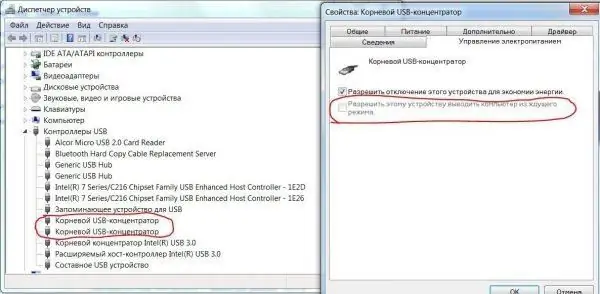
Uncheck the box to allow the system to turn off the USB controller to save power
If your printer is Plug and Play, but when you plug it in, it does not appear in Device Manager under Printers, make sure there are no other unknown devices in the manager. It is possible that the drivers for the printer have flown off, and the manager now simply cannot identify it correctly. Reinstall the drivers and restart your computer.
If you are using an older printing device that does not support this standard, remember that Device Manager considers this hardware hidden by default. To display equipment of this type in the tree of installed devices, check the Show hidden devices option in the View menu. Then look for information about the printer in the "Non-self-configurable device drivers" section.

For non-Plug & Play printers, see Non-Self-Configuring Device Drivers
What to do if the monitor is recognized as universal
Modern monitors in most cases are recognized by the system as "Generic PnP Monitor" and do not require installation of special drivers. But for older monitors, this can be a problem. Windows often installs a "Standard Default Driver (VGA)" for them. However, this mode may not support the monitor's native resolution or scan rate, which may cause inconvenience to using the computer. Usually the monitor is not detected correctly if the native drivers for the video adapter have not been installed.
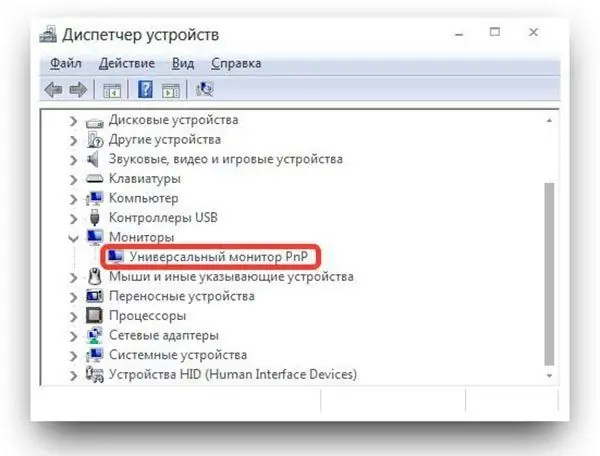
For many modern monitors, a standard driver is sufficient, but with older models it may not work correctly
Boot your computer in Safe Mode to install the correct monitor driver. Remove the graphics card driver and restart your computer again. The system should re-recognize your monitor, after which you can reinstall the drivers for your video adapter.
If your monitor supports several methods of connecting to a PC, try connecting it in a different way, for example, use the HDMI port instead of DVI, or connect the PC's DVI connector via an adapter to the monitor's VGA connector.
Sometimes it is impossible to properly calibrate the monitor without native drivers
Missing floppy drive from device manager
If you are using an IDE or SATA drive, make sure it is detected correctly in the appropriate BIOS window. The absence of a drive in the BIOS settings may be due to poor connection of the power cable, insufficient output power of the built-in power supply, or even an incorrect combination of Master / Slave switches (jumpers) that distribute the roles of devices connected via a single IDE loop. If the drive is detected in the BIOS, uninstall and reinstall the IDE / ATAPI drivers:
- Open Device Manager and select Show Hidden Devices in the View menu.
- Expand the IDE / ATAPI Controllers section.
- Select and right-click "ATA Channel 0" and click the "Delete" button.
- Do the same with ATA Channel 1.
- Select and right-click "Standard PCI Dual Channel IDE Controller" and click the "Uninstall" button.
- If there are additional entries, right-click them and then choose Delete.
-
Reboot your computer.

Section "IDE Controllers" of Device Manager To restore the drive, you will need to remove all hardware in the "IDE controllers" section
After restarting, the drivers will be installed automatically.
If you are using an external or internal USB drive, visit the motherboard manufacturer's website to download and install the latest drivers for your particular model of the USB controller built into the chipset. It is worth noting that in such circumstances, problems with a PC will not be limited only to a drive, flash drives and other devices connected via a universal serial bus will also not work.
It is possible that third-party software for working with CD and DVD drives (utilities for burning discs, creating virtual drives in the system, etc.) is to blame for the absence of a drive. Uninstall these programs from the PC and restart the computer. If the situation does not improve, try cleaning the registry of any possible changes made by them manually. For this:
- Press Win + R keys to open the Run dialog box.
- Type regedit and press Enter (when prompted for an administrator password or confirmation, enter the password or select Allow).
- In the Navigation Pane, locate and select the following registry subkey: HKEY_LOCAL_MACHINE / SYSTEM / CurrentControlSet / Control / Class / {4D36E965-E325-11CE-BFC1-08002BE10318}.
- If the section contains the keys UpperFilters and LowerFilters, remove them.
-
Close Registry Editor and restart your computer.

Removing traces of third-party disk management software from the registry Removing the keys UpperFilters and LowerFilters in the corresponding branch of the system registry will help restore the drive in Windows 7
Video: how to repair a floppy drive in windows 7 device manager
Device Manager does not see the video card
If your graphics card was not working at all, you probably won't see the device manager window. Perhaps the system simply could not find the correct drivers and identified the video card as a standard VGA video adapter. Find this line in the manager and update the driver for the device, having previously downloaded the latest version from the manufacturer's website, designed specifically for your operating system. It is worth remembering that for NVidia video cards there are different drivers for desktop computer video adapters and graphics cards installed in laptops. For the latter, look for drivers with an “M” at the end of the series (eg NVidia 9600M Series, not NVidia GeForce 9600 Series).
In addition, it is worth making sure that there are no unknown devices in the manager. For example, the nVIDIA graphics driver on Sony notebooks may not install correctly if the SFEP driver is not installed on the system (Sony Firmware Extension Parser is considered unknown in the manager).
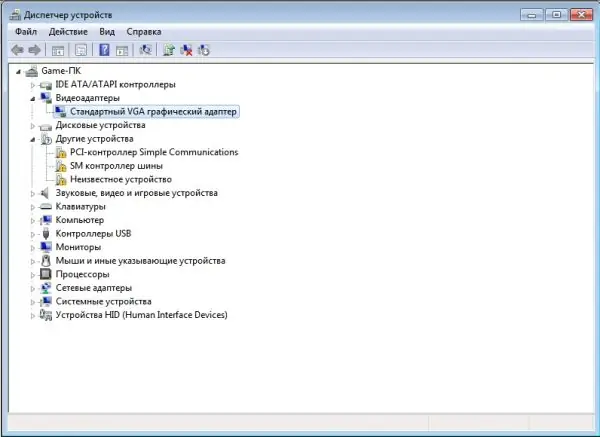
If the driver is installed incorrectly, the video adapter is detected as standard, and unrecognized objects appear in the "Other devices" section
If the PC configuration contains an integrated and a discrete graphics card at the same time, one of the video adapters can generally be recognized as an unknown device. In this case, install the required driver from the disc supplied with the video card or download it on the Internet. In the case of two video adapters, one of them can be physically disabled, as a result of which it is absent from the manager. Check if the integrated video or PCI-E graphics card is enabled in the BIOS. A similar operation can be done programmatically using the NVIDIA Control Panel or Catalyst Control Center. If the video adapter was turned off, turn it on and it will appear in the manager.
If the video adapter was configured normally, functioned without errors and suddenly disappeared, try to roll back the system to a restore point, in which everything was in order with it.
Do not panic if you accidentally disconnect the only video adapter from Device Manager and your screen goes blank. Restart your computer in Safe Mode and enable the video adapter in the manager again. If the configuration has an integrated and discrete video card, using the BIOS, you can switch the device to which the initial image output will be carried out.
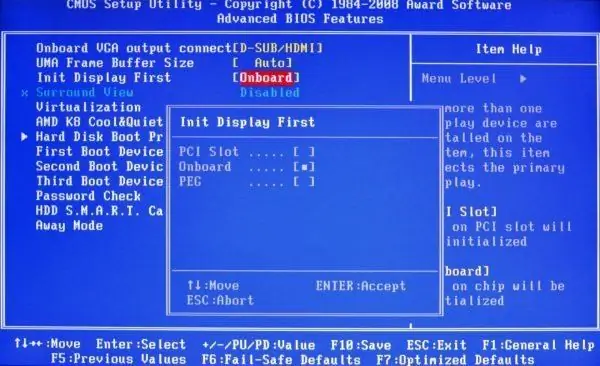
Select an integrated (Onboard) or discrete (PCI Slot) video adapter as needed
In this case, resetting the BIOS to defaults also helps.
Device Manager is definitely essential for managing your computer. Without it, you won't be able to properly tune your hardware to unleash the full potential of your PC. The key to the reliable operation of the OS without annoying errors and crashes is to keep the drivers of the devices involved up to date, disconnect unnecessary equipment and reinstall problem components. Windows Device Manager will help you with this.
Recommended:
Do-it-yourself DVD Player Repair: What To Do If The Player Won't Turn On Or Won't Read Discs + Video
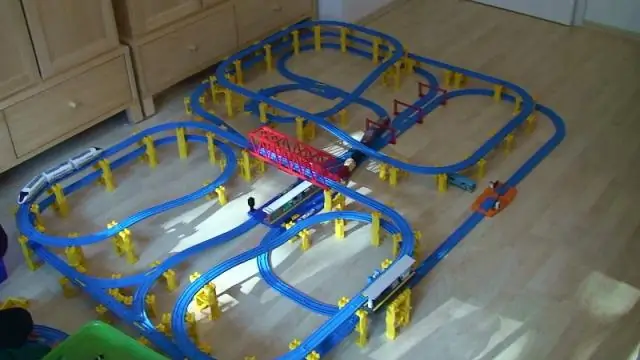
How to independently learn how to determine the breakdown of a DVD player? How to disassemble the device? How to repair a player with your own hands?
How To Use AirDrop, What To Do If It Doesn't Work Or Can't See IPhone, IPad, IPod Touch
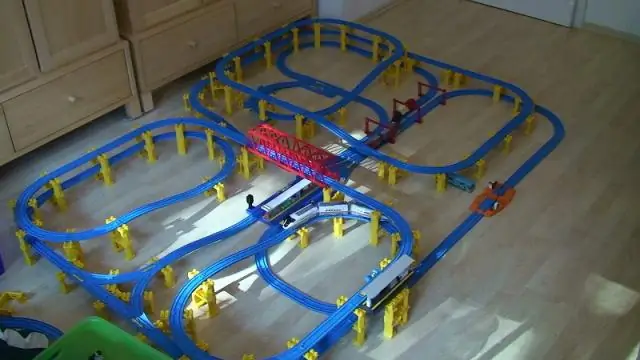
AirDrop and supported devices. How to find out if it's available on a device. How to enable, configure and disable. Troubleshooting AirDrop Problems
How To Find A Phone If It Is Turned Off - At Home And In Other Places, Search For A Device On Android And Other Os Through A Computer, By A Sim Card, Imei
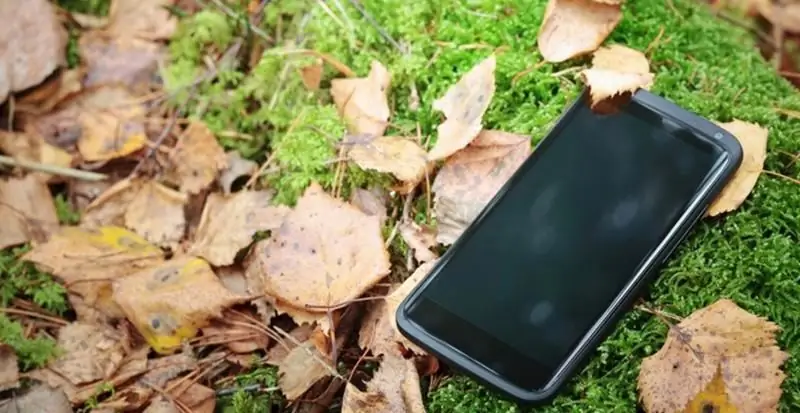
Various ways to find the switched off phone. When the device cannot be found and how not to lose it
Why On Windows 10 The Start Button Does Not Work And The Main Menu Does Not Open
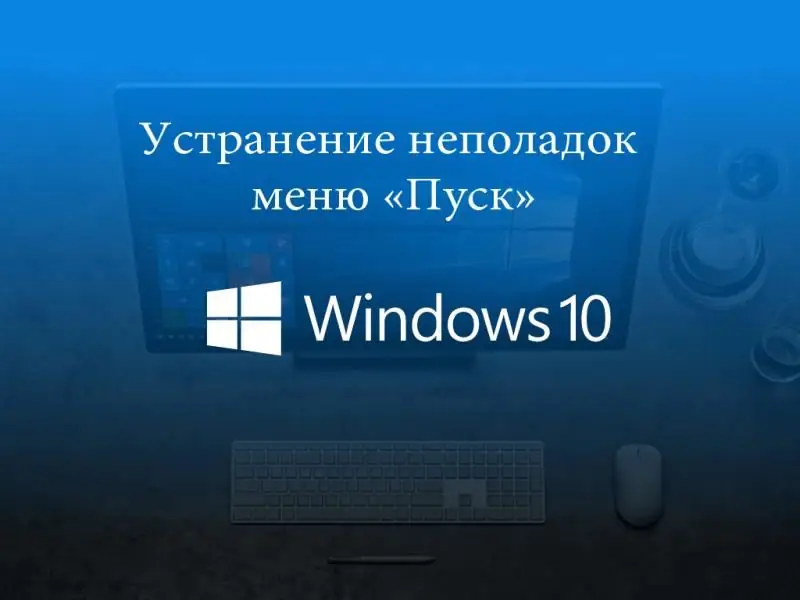
The most common problems in the "Start" menu on Windows 10. The reasons for the appearance. Solutions: universal and for specific cases
What To Do If There Is No Sound In Yandex Browser - Why It Doesn't Work And How To Fix It, Step-by-step Instructions With Photos And Videos
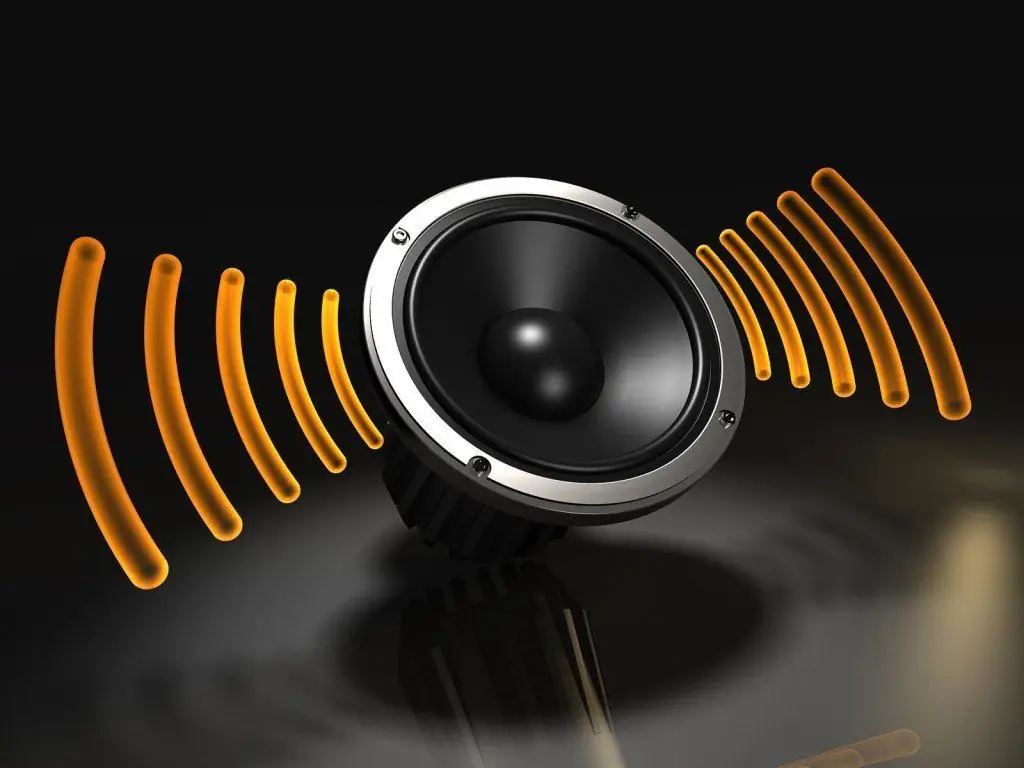
Reasons why there may be no sound in Yandex Browser. How to fix the problem with programmatic methods. What to do if all else fails
